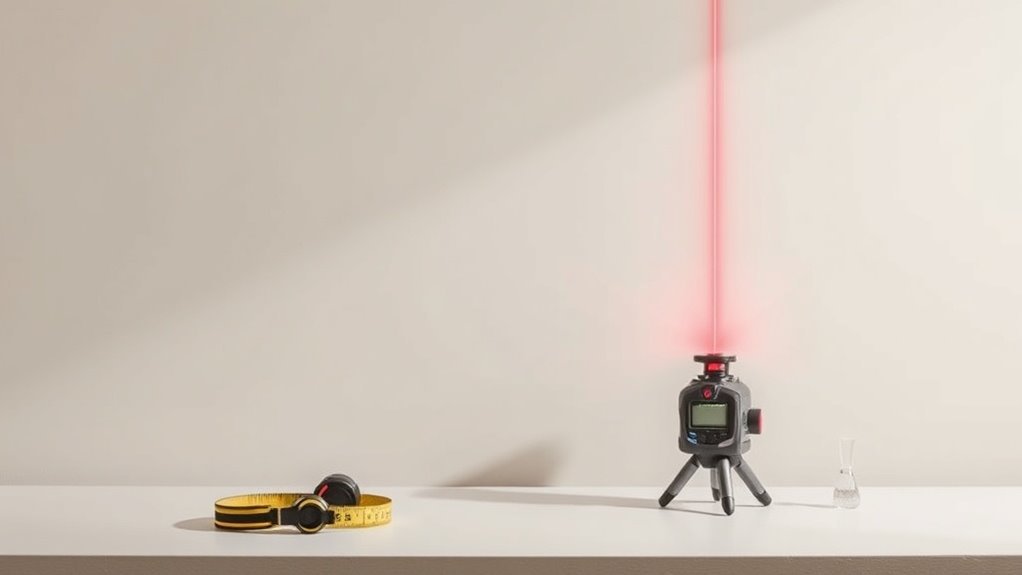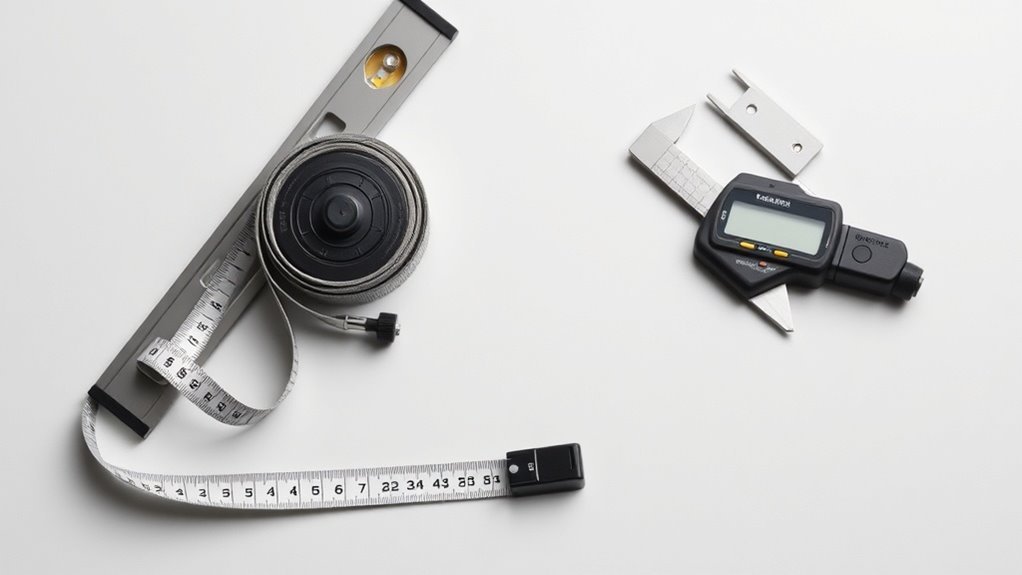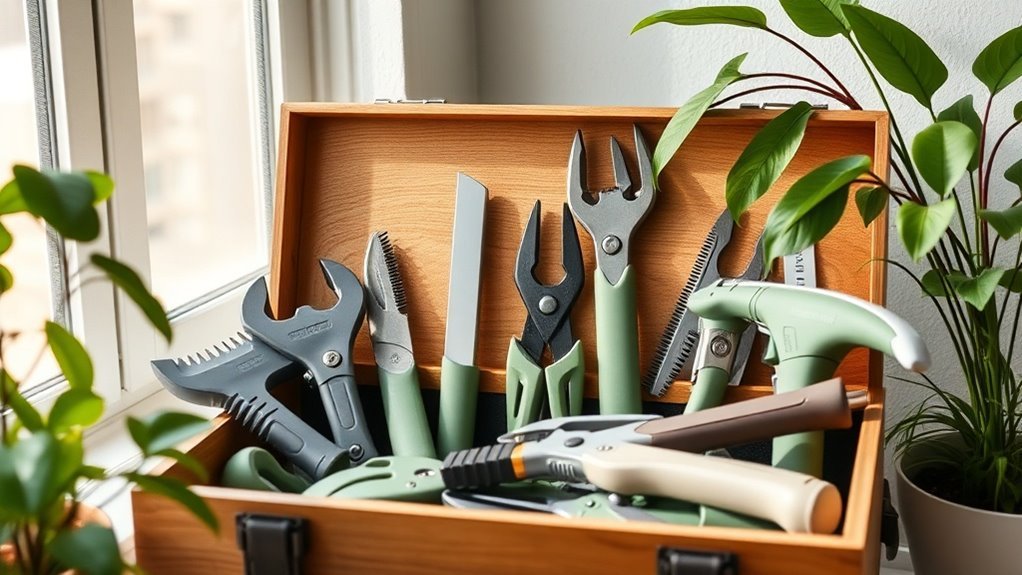The Basics of Wall Anchors and Fastening Tools
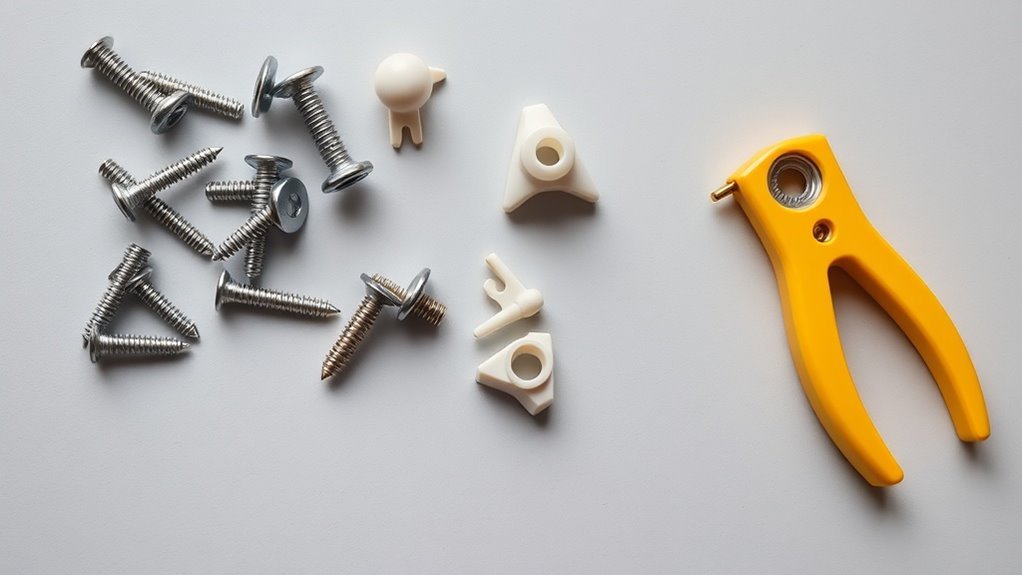
Understanding wall anchors and fastening tools is essential for securely hanging items. You’ll find different anchors suited for various wall materials and weights, such as plastic for lightweight items and toggle bolts for heavier loads. Using the right tools, like power drills, screwdrivers, and pliers, makes installations efficient and safe. It’s important to follow best practices for installation and testing to guarantee stability. Continue on to discover tips on avoiding common mistakes and ensuring your projects are secure.
Key Takeaways
- Wall anchors come in various types, including plastic expansion anchors for lightweight items and metal toggle bolts for heavier loads.
- Proper load-bearing capacity knowledge is essential for selecting the right anchor to prevent wall damage and ensure safety.
- Fastening tools include screwdrivers, pliers, power drills, and wrenches, all necessary for efficient and secure installations.
- Install anchors by choosing the correct type, drilling the right-sized hole, and ensuring screws are tightened without overdriving.
- Regularly test and inspect installed anchors for stability and wear to maintain safety over time.
Understanding Wall Anchors: Types and Uses
When it comes to hanging heavy items on walls, understanding wall anchors is essential. These devices provide the extra support needed to secure your pictures, shelves, or televisions safely.
Understanding wall anchors is crucial for securely hanging heavy items like pictures, shelves, and televisions.
There are various types of wall anchors available, each designed for different wall materials and weight capacities. For instance, plastic expansion anchors work well in drywall for lightweight items, while metal toggle bolts are ideal for heavier loads.
You might also consider screw-in anchors, which provide a strong hold in drywall. Understanding these options will help you choose the right anchor for your specific project, ensuring that your items stay securely in place and preventing potential damage or accidents.
Knowing these basics is key to successful wall mounting.
Choosing the Right Anchor for Your Project
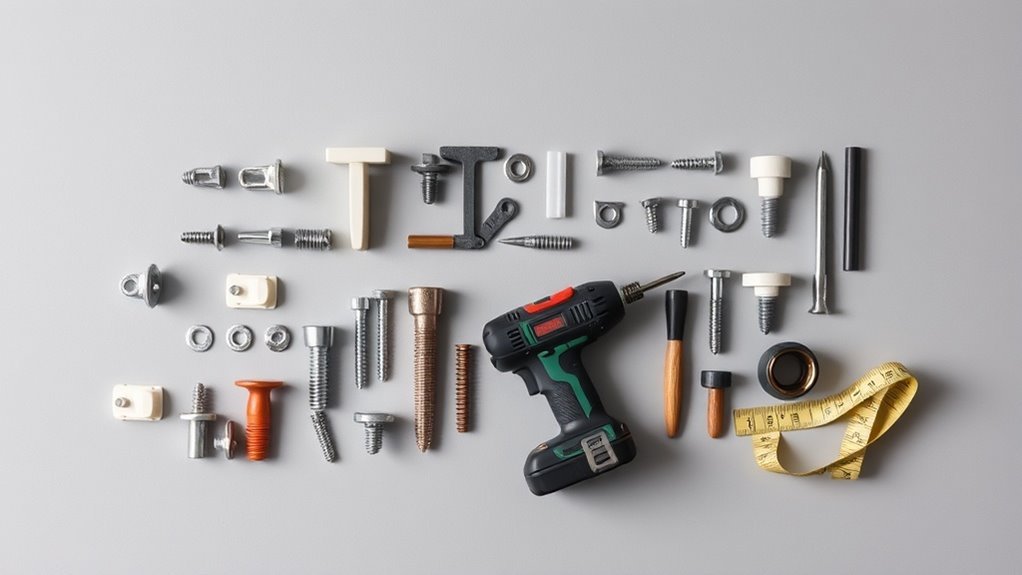
When it comes to choosing the right anchor for your project, you’ll want to evaluate the type of wall anchor that best fits your needs.
Different anchors offer varying load-bearing capacities, so it’s essential to assess what you’ll be hanging and the weight it needs to support.
Understanding these factors will guarantee your project stays secure and safe.
Types of Wall Anchors
Choosing the right wall anchor can make all the difference in ensuring your project’s success. You’ll find several types of wall anchors, each suited for specific materials and applications.
For drywall, toggle bolts and plastic anchors are popular choices, providing good support without much hassle. If you’re working with concrete or brick, concrete screws or masonry anchors are your best bet, as they’re designed to grip these dense surfaces securely.
For lightweight items, self-drilling drywall anchors can be a quick and effective solution. Finally, if you’re mounting shelves or heavy items, consider a metal wall anchor for added strength.
Knowing the types available will help you select the right one for your needs and keep your project on track.
Load-Bearing Capacity Considerations
Understanding load-bearing capacity is essential for selecting the right wall anchor for your project. Different anchors can handle varying weights, so knowing how much load you’ll place on them is key.
For lightweight items, plastic expansion anchors work well, but for heavier loads, consider toggle bolts or metal anchors. Always check the manufacturer’s specifications for the maximum load each anchor can bear.
When hanging items like shelves or TVs, think about the anchor’s location—studs or solid walls provide better support than drywall alone.
It’s important to distribute weight evenly to prevent any damage. By evaluating your project’s requirements and choosing anchors that can safely support the load, you’ll guarantee a secure and durable installation.
Fastening Tools: An Overview
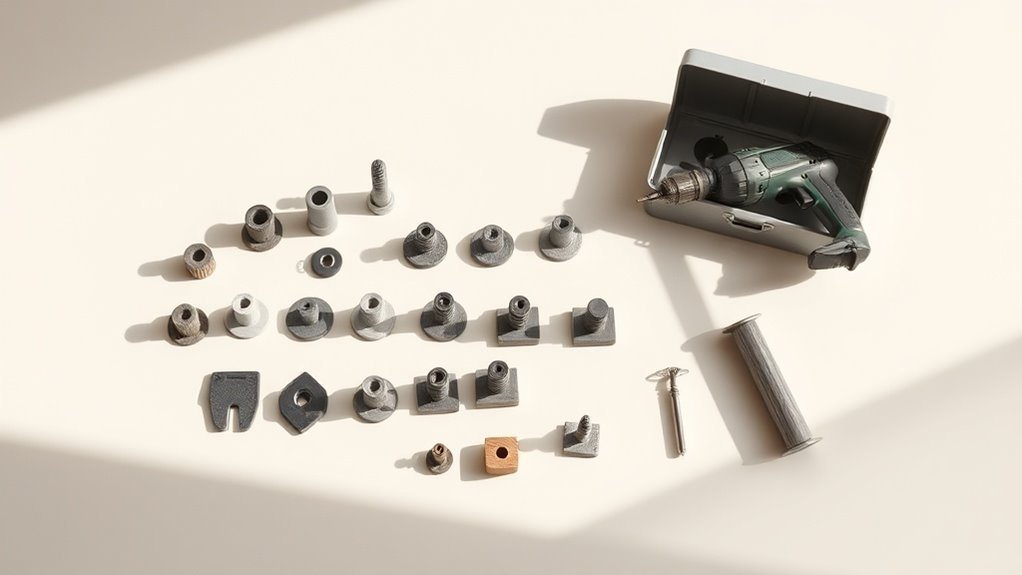
When it comes to fastening tools, understanding the different types available is key to your projects. You’ll want to know how to use them properly to guarantee your work holds up over time. Plus, keeping your tools well-maintained will make all the difference in performance and longevity. Choosing the right pliers for specific tasks can significantly enhance efficiency and effectiveness in your projects.
Types of Fastening Tools
Fastening tools are essential companions for both DIY enthusiasts and professional builders alike. You’ll find a variety of fastening tools to suit your needs.
Screwdrivers, for example, come in different types, including flathead and Phillips, perfect for driving screws. Then there are pliers, which help with gripping and bending. If you’re dealing with heavy-duty applications, consider using a power drill or impact driver, making it easier to drive screws quickly and effectively.
For specialized tasks, there are tools like nail guns, which can save you time on big projects. Finally, don’t overlook wrenches and hex keys, important for tightening bolts. Each tool plays a significant role in ensuring your projects stay secure and professional-looking.
Proper Usage Techniques
While you may be enthusiastic to plunge into your project, knowing the proper usage techniques for fastening tools is essential for achieving the finest results.
Using your tools correctly not only enhances efficiency but also guarantees your work is safe and durable. Here are some key techniques to keep in mind:
- Choose the right tool: Different materials require specific fastening tools for peak performance.
- Maintain proper grip: Make sure you have a secure hold when operating tools to maintain control.
- Follow manufacturer instructions: Adhering to guidelines guarantees correct usage, reducing the risk of mishaps.
- Practice your technique: If you’re new to a tool, practice on scrap material to build confidence before starting your project.
With these techniques, you’ll achieve professional results in no time!
Maintenance and Care Tips
To guarantee your fastening tools remain efficient and reliable, regular maintenance is key.
Start by cleaning your tools after each use—removing dust and debris prevents wear and tear.
Inspect your tools regularly for any signs of damage like rust or loose parts. If you notice anything amiss, fix it immediately to prevent further damage.
Keep tools lubricated as per manufacturer guidelines to make sure they operate smoothly.
Store your tools in a dry, organized space to avoid accidental damage. Using tool cases can also help maintain their condition.
Finally, read the manufacturer’s instructions for specific care recommendations to maximize the lifespan of your tools.
Following these simple tips will keep your fastening tools in top shape for years to come.
Installing Wall Anchors Correctly
Properly installing wall anchors is essential for guaranteeing your fixtures are secure and stable.
Start by selecting the right anchor type based on your wall material and the weight of the item you’re hanging.
Then, follow these steps for a successful installation:
- Drill a hole: Use a drill bit that matches the size of your wall anchor.
- Insert the anchor: Gently tap the anchor into the hole until it’s flush with the wall.
- Screw it in: Use a screw compatible with the anchor, tightening it until secure but not overdriven.
- Test the strength: After installation, give it a gentle tug to confirm it can support the intended load.
Additionally, consider using proper storage containers to keep your tools organized and safe when not in use.
With these steps, you’ll be on your way to a sturdy and reliable installation.
Common Mistakes to Avoid
When installing wall anchors, overlooking some common mistakes can lead to disastrous results, such as damaged walls or unsecured fixtures.
One common error isn’t choosing the right type of anchor for your wall material. If you’re fastening into drywall, using a toggle anchor might be essential for added support.
Choosing the right anchor for your wall type is crucial for secure installations.
Another mistake isn’t pre-drilling holes, which can cause cracking. Make certain you’re also not over-tightening the screws; this can strip the anchor or cause it to fail.
Additionally, failing to check the load rating can result in disaster.
Finally, don’t skip the stud finder; hanging heavy items incorrectly can lead to accidents. Understanding the importance of load ratings ensures that you choose tools and anchors that properly support the weight of your fixtures.
Avoid these pitfalls to guarantee your anchors work effectively and securely.
Best Practices for Secure Fastening
Though it may seem straightforward, guaranteeing secure fastening involves a few key best practices that can greatly enhance the outcome of your project.
By following these strategies, you can create a sturdy and lasting installation:
- Choose the right anchor: Select anchors that fit the wall type and weight of your item.
- Pre-drill holes appropriately: Use a drill bit that’s the right size for your anchors to avoid splitting the material.
- Tighten hardware firmly: Make sure screws and bolts are secure, but don’t overtighten which can strip threads or damage the anchor.
- Test the installation: After fastening, give the item a gentle tug to ensure it’s securely attached.
Additionally, using the correct torque settings for your fasteners ensures optimal performance and longevity.
Implementing these best practices will help avoid mishaps and deliver a dependable hold for your projects.
Questions
Can I Reuse Wall Anchors After Removing Them?
You can’t really reuse wall anchors after removing them. They often get damaged or lose their grip strength. It’s best to replace them with new anchors to guarantee secure fastening for whatever you’re hanging.
What Is the Weight Limit for Each Type of Anchor?
Did you know that a toggle bolt can hold up to 50 pounds in drywall? Each anchor type varies: plastic anchors support about 10-25 pounds, while metal ones can hold considerably more, depending on installation.
How Do I Remove a Wall Anchor if It’s Stuck?
To remove a stuck wall anchor, try gently twisting it with pliers. If that doesn’t work, you can use a flathead screwdriver to pry it out. Be careful not to damage the surrounding wall.
Can Wall Anchors Be Used Outdoors?
Yes, wall anchors can be used outdoors, but make sure you choose ones designed for external conditions. They’re often made from corrosion-resistant materials to withstand moisture and temperature changes, ensuring a secure hold over time.
Do I Need Special Tools for Heavy-Duty Anchors?
You won’t believe it, but using heavy-duty anchors requires some special tools. You’ll need a power drill, masonry bits, and possibly a hammer. Trust me, having the right gear makes all the difference in installation.
Conclusion
To summarize, understanding wall anchors and fastening tools is essential for any DIY project. Did you know that about 70% of construction professionals cite improper anchor installation as a leading cause of failures? By choosing the right anchors and using proper installation techniques, you can avoid common pitfalls and guarantee your projects are secure and long-lasting. So, whether you’re hanging shelves or securing heavy objects, follow best practices for the best results.


